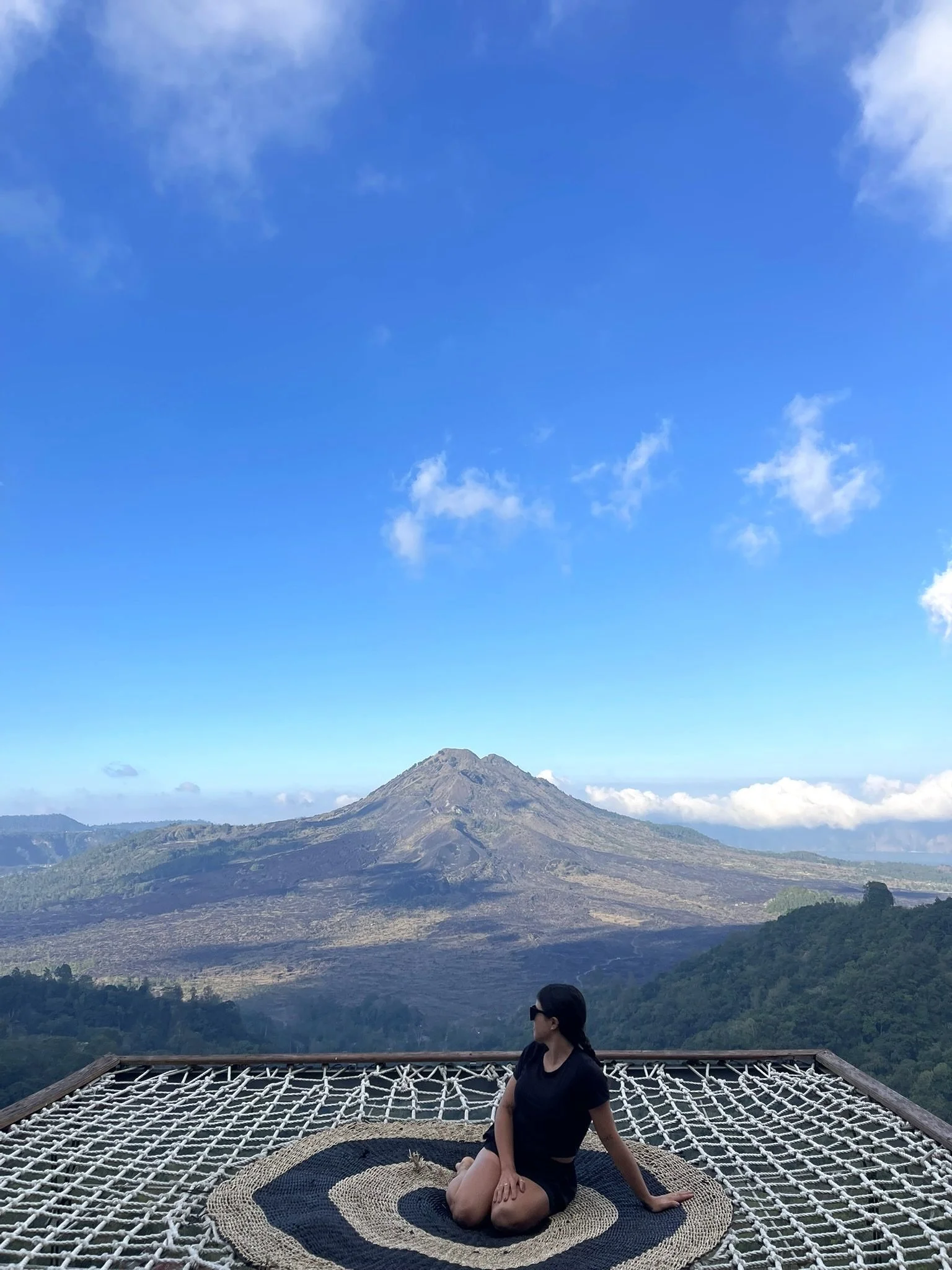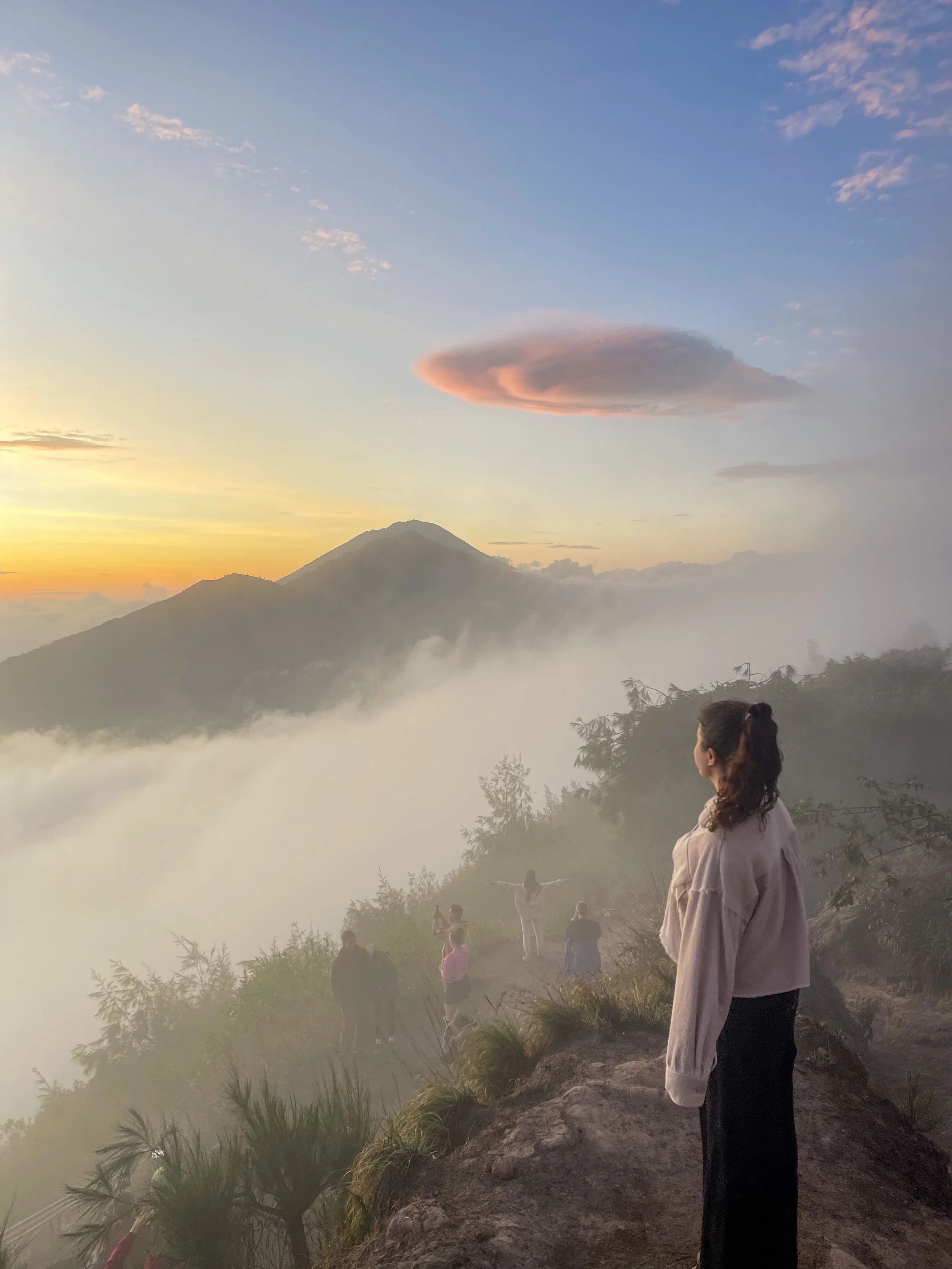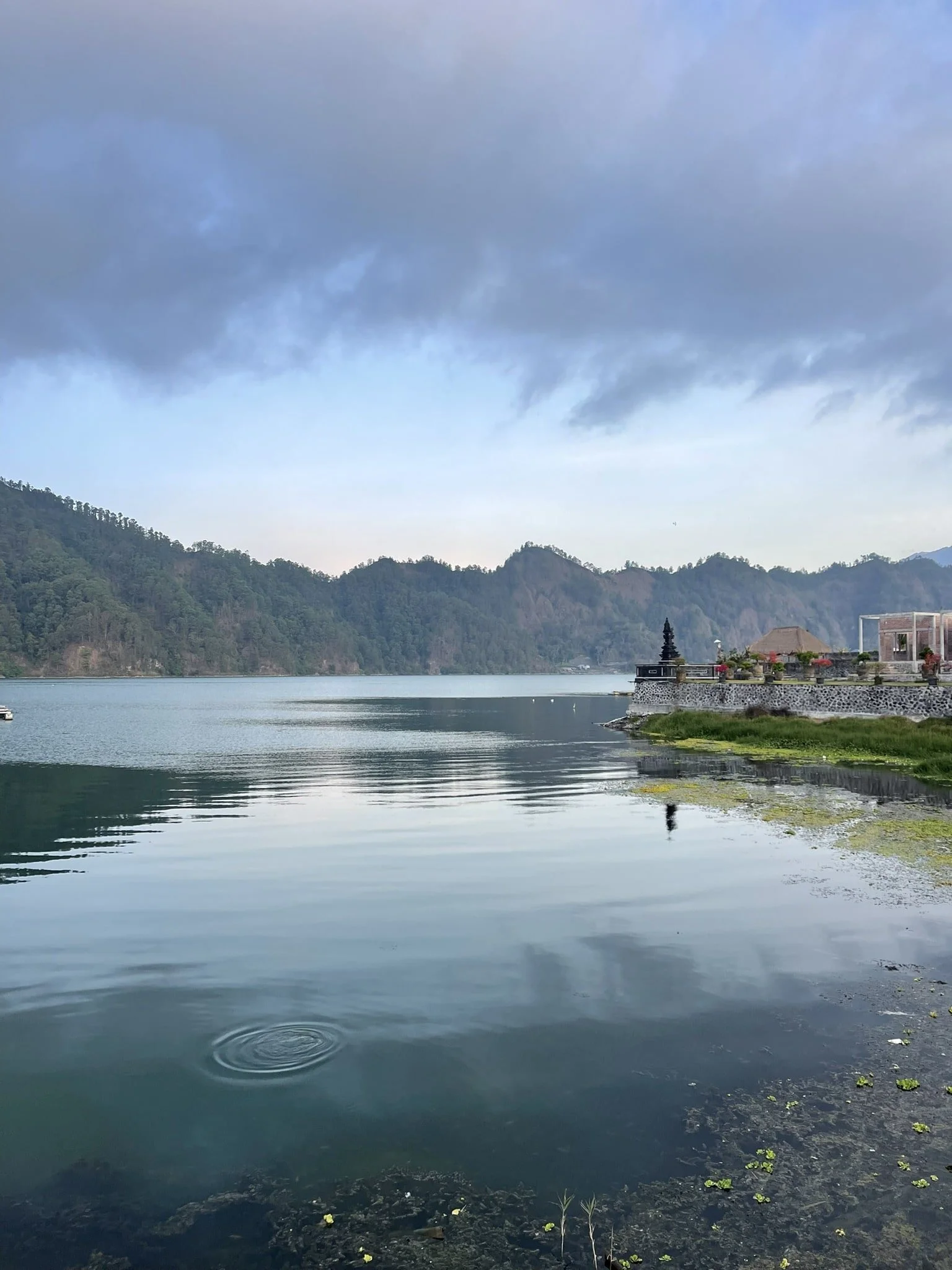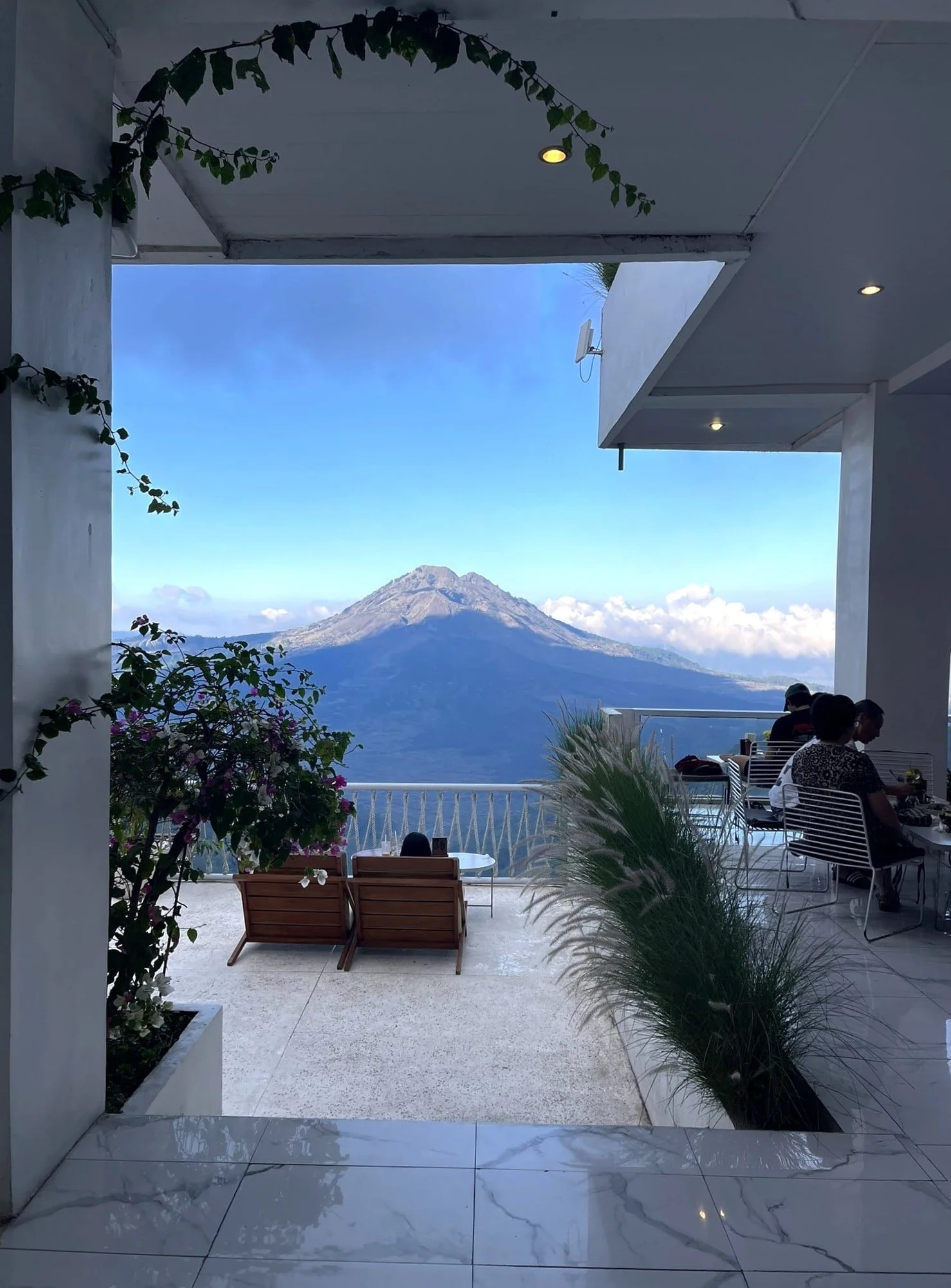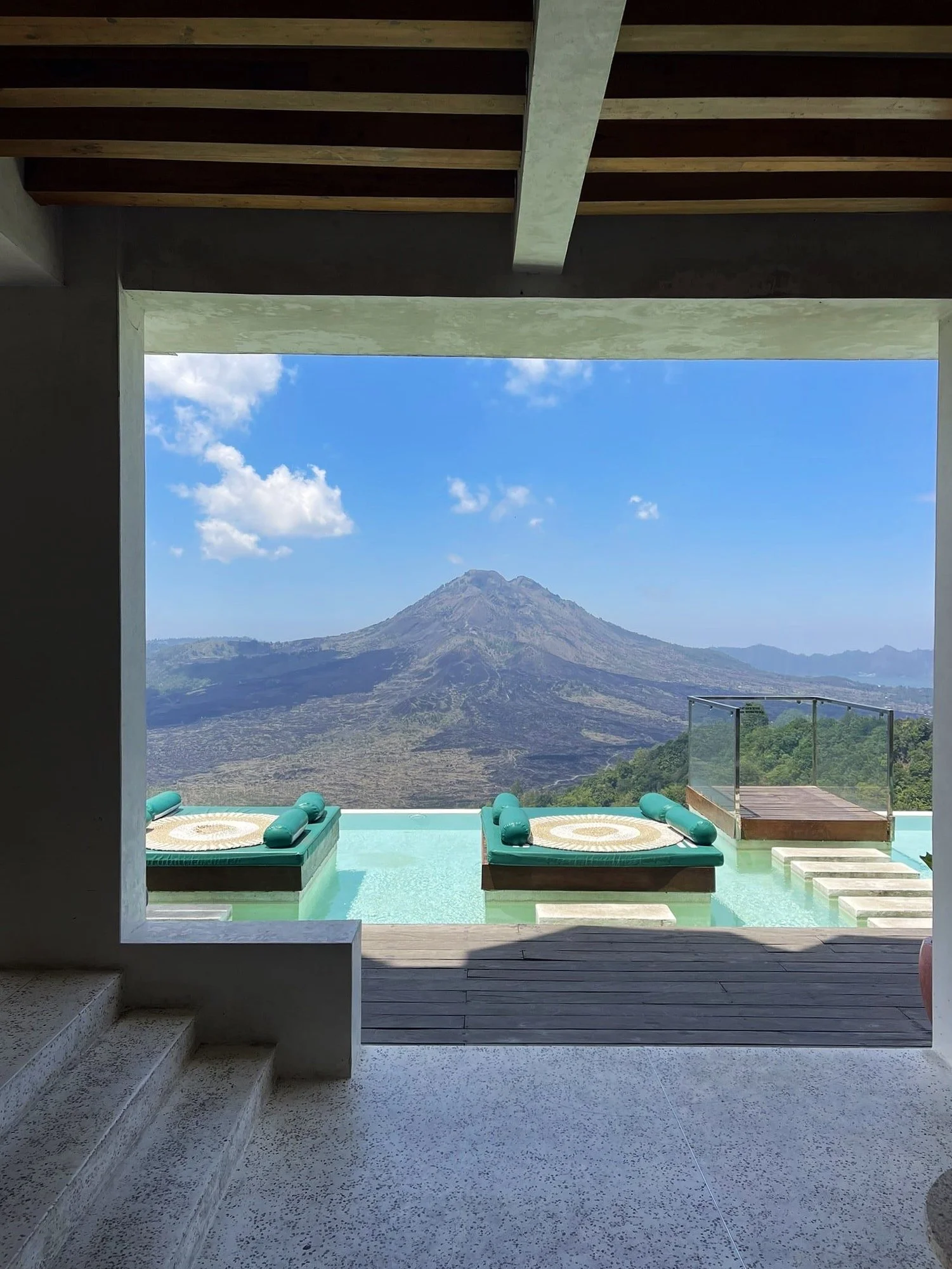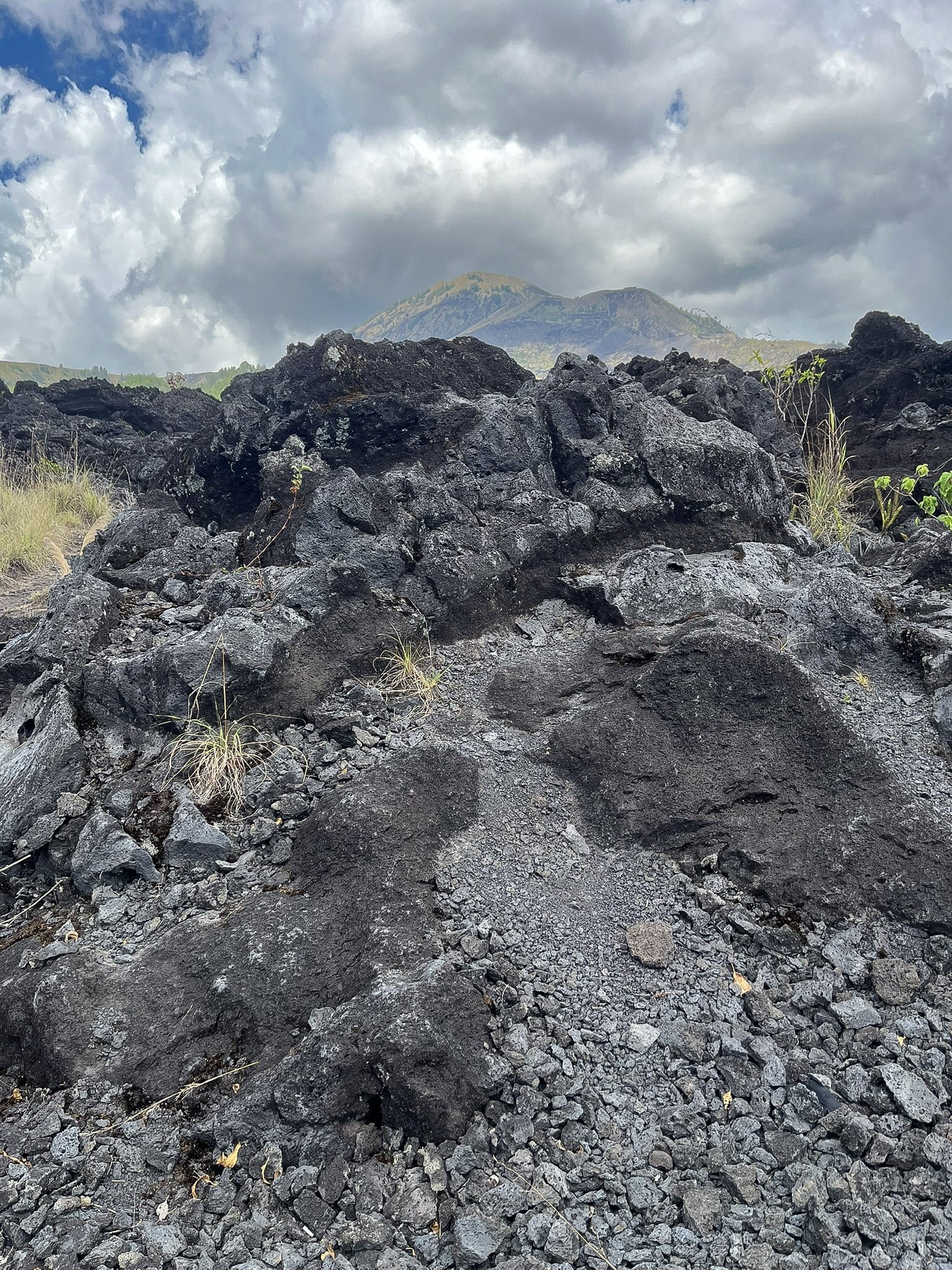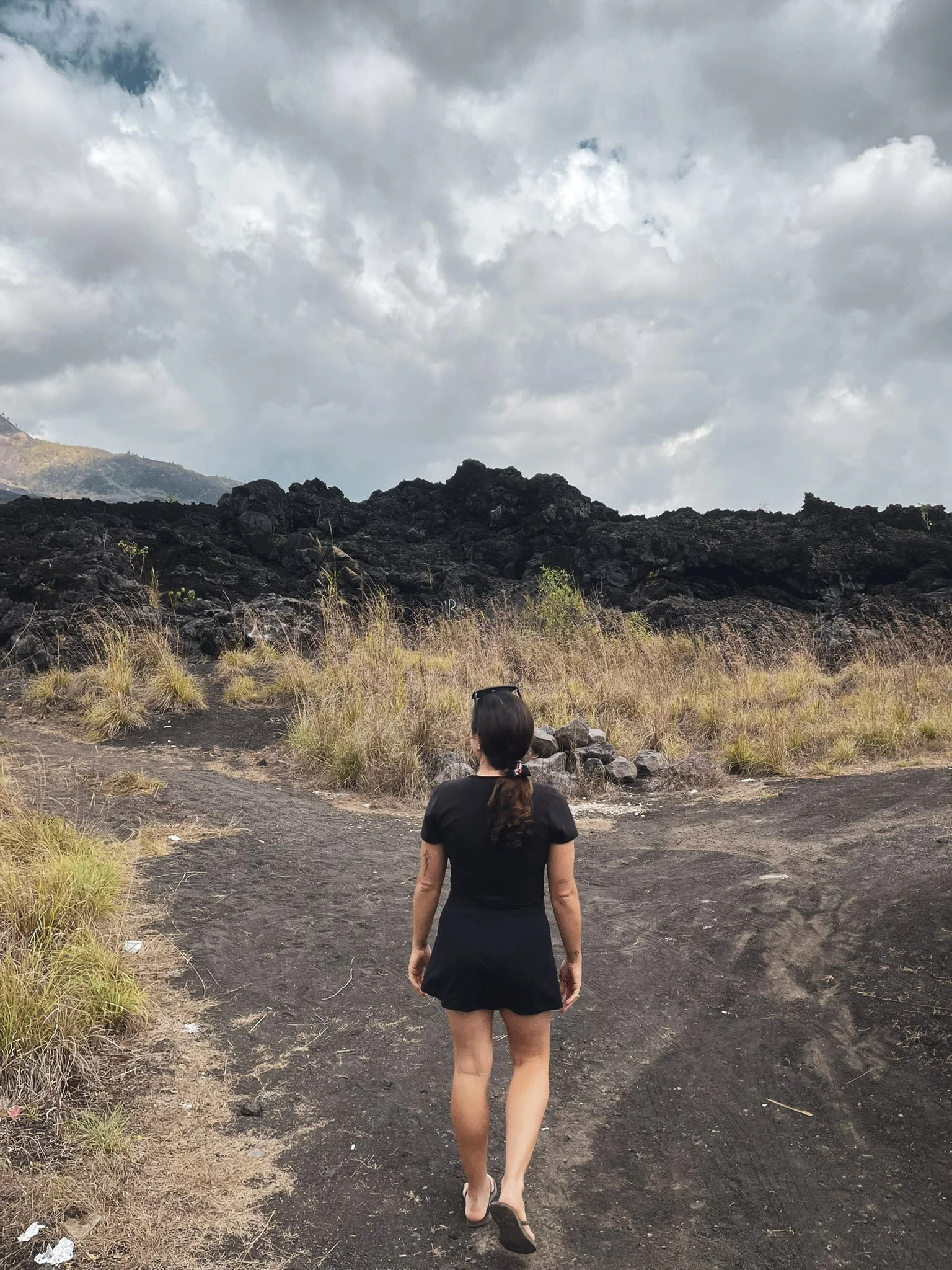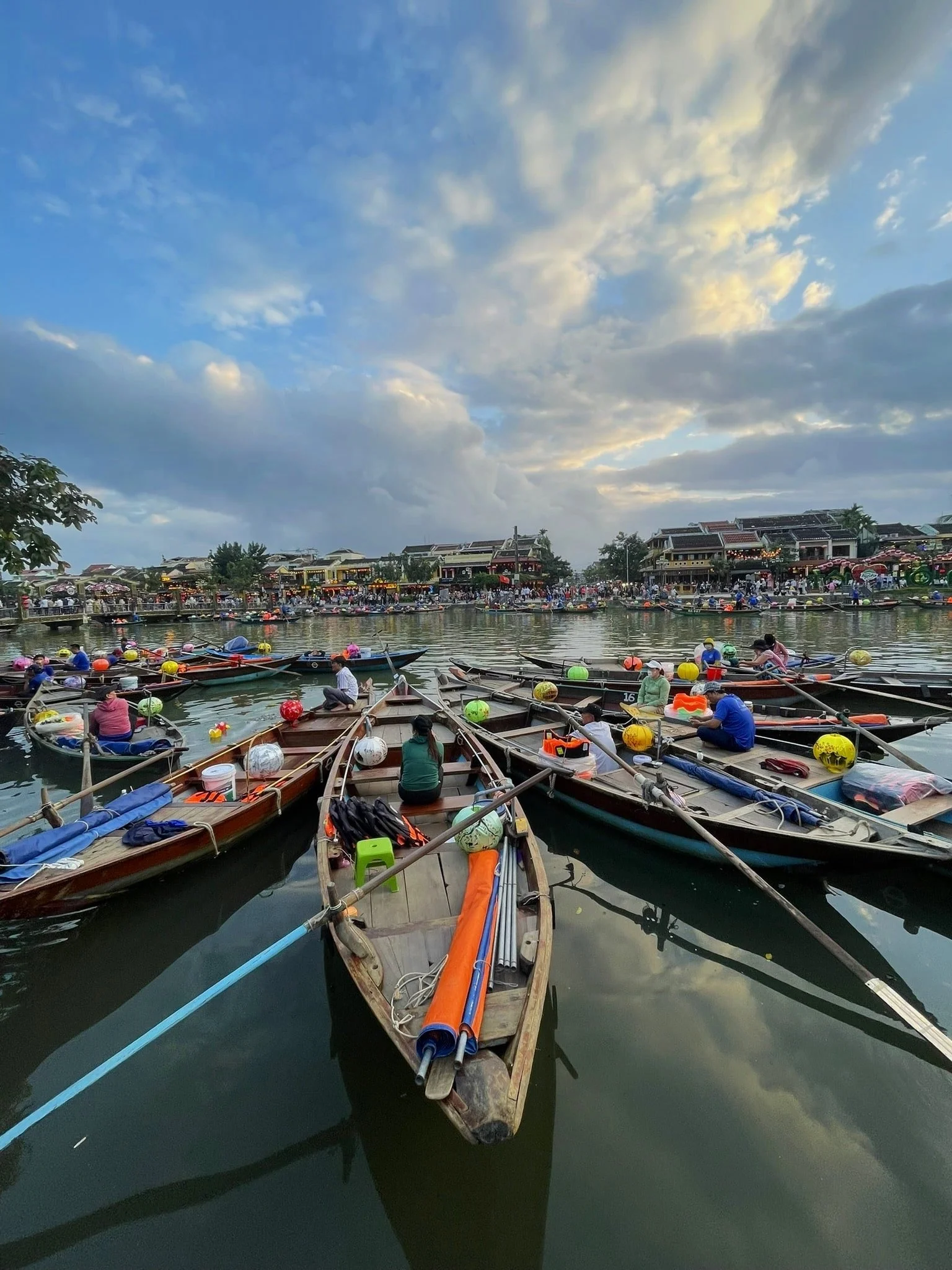The 6 Best Things To Do in Kintamani, Bali
Welcome to Kintamani, Bali!
Kintamani is home to the incredible Mount Batur, Mount Abang, and Batur Lake, creating a breathtaking landscape. Following major eruptions in the 1900s, Batur’s massive crater, now filled with villages, vegetation, fishermen, and farms, flourishes thanks to the lava's rich minerals. This underrated region of Bali should not be missed. From trekking up Mount Batur at sunrise to wandering through black lava fields, Kintamani offers some of the most unique experiences in Bali, promising unforgettable memories. Here are the six best things to do while exploring this spectacular region of Bali.
Oh & as always practice sustainable tourism while traveling please :)
Disclaimer: This post contains affiliate links. If you click through and make a purchase, my blog may receive a commission at no additional cost to you.
6 best things to do in Kintamani, Bali
Note: If you are looking for general information on where to stay in Kintamani, how to get around, and more, scroll to the bottom for details on this!
Kintamani Tips:
There are a lot more flies than other areas in Bali because of the altitude and agricultural land - they can be annoying.
It is CHILLY - bring warm clothing, especially for nighttime and early mornings. Temperatures can drop below 18 degrees Celsius (64 Fahrenheit) with a slight breeze.
The Mount Batur area is truly beautiful and peaceful. It feels magical being up in the volcanos with the clouds and lush green farmland everywhere. It feels a bit less Westernized and more authentic here. I recommend spending 1-2 days here to fully experience the unique atmosphere that Kintamani offers compared to the rest of Bali.
#1: Trek up Mount Batur for sunrise
One of the best things to do in Kintamani, Bali is to trek up Mount Batur, the island’s second-largest Volcano next to Agung. Although waking up in the early hours of the morning is not ideal for many people (including me), I do believe this trek is worth setting your morning alarm for.
Wake up at 4:00 AM, and begin your 1-3 hour long hike under the stars with a guide and flashlight in hand. I had read before that this hike can take 3 hours + for some, but my boyfriend and I had no trouble completing it in 1! The hike is manageable for all fitness levels, though it can feel steep and challenging if you do not have much hiking experience. Having grown up hiking the White Mountains in the U.S. (4,000 feet up), this trek felt like a walk in the park for me. If you incorporate regular movement into your life, you should find it entirely doable. Beginning at 4:00 AM gives you nearly 2 hours for the trek. If you are having trouble, you can even hire a motorbike to take you up most of the way, covering about 70 percent of the hike.
The sunrise at the top of Batur is a dreamy mix of orange and yellow hues, but be sure to check the weather forecast ahead of time to avoid climbing for a sunrise hidden by the clouds. We did have a cloudy morning but still enjoyed the sunrise through some of the openings in the clouds.
The hike down is also incredibly beautiful as you wander through the black lava and across the rims of the Volcano.
A guide is required for this hike, as the locals do not appreciate nor like it when people attempt the hike on their own, and honestly, I do not recommend it with how dark it is. The guide knows the path very well and assures you trek to the top safely. On top of that, the price was only 350,000 IDR (USD 23) and included water, breakfast, a flashlight, and coffee. If you prefer a tour via jeep, you can find the best option here!
#2: Pinggan Sunrise View Pohon Cinta
Don’t feel like hiking early in the morning, or is trekking not for you? That’s okay! Try heading to Pinggan Sunrise View Pohon Cinta and watching the sunrise around Mount Batur for only 10,000 IDR (USD 0.64). This way you can wake up later in the morning (around 5:00 AM or so) and drive to an epic sunrise spot rather than hiking up to one. Again, be sure to check the forecast for a clear morning. Luckily the chances for a clear sunrise view are higher here than on Mount Batur itself. The views during the day and for sunset are just as spectacular!
#3: Pura Segara Ulun Danu Batur
One of the most beautiful parts of Kintamani is that you not only get a near-perfect view of Mount Batur but also clear views of Mount Abang and Batur Lake, which sits in Batur’s crater.
Pura Segara Ulun Danu Batur, a floating temple on this lake, is the best spot to capture a view of your landscape from below. The entrance fee is 20,000 IDR (about 01.28 USD). You must have your shoulders and knees covered to enter. Unfortunately, the temple was under construction during my visit, so it was not open.
Canoes are available for rent nearby for 150,000 IDR (just under 10 USD) if you prefer a view from the lake. Swimming is not permitted here—the lake is designated as a spiritual body of water.
There is a lovely Warung nearby to the lake, Warung Mina. The owner here is lovely and accommodating. She made a special vegan and gluten-free dish for me and even offered some free fried bananas. I highly recommend stopping in when you visit the lake.
#4: Enjoy a bite to eat on Penelokan Main Road
Penelokan Main Road offers the most incredible viewpoints of Mount Batur and its massive crater below. On a clear day, every crevice and feature of Batur's landscape is visible in stunning detail. A picture truly says a thousand words, perfectly capturing why this spot is a must-visit. There is a large bridge along the road where you can snap great photos of Batur, but I recommend heading to one of the many roadside cafes instead. Enjoy a meal or coffee while soaking in the view. I suggest going twice—once during the day for a crisp view of Batur and again in the evening to catch the sunset over the landscape.
Pro Tip: Dress warmly! It can be very chilly up here, especially near the evening. I always wore long pants and a light coat.
The view from the popular restaurant, Montana del Cafe, is a picture-perfect moment, offering a giant net suspended over Batur’s crater to sit on and gaze out at the view. If you are afraid of heights this photo-op may be a bit nerve-wracking! The menu offers coffee, smoothies, smoothie bowls (vegan and gluten-free if you take off the granola), brunch, lunch, and local options.
Another great option is Paperhills, which offers daybeds, an infinity pool, balcony seating, and more. The food here has more variety with Western and local options. I prefer this menu over the Montana del Cafe one.
#5: Experience Black Lava
Mount Batur’s eruptions (more so the major one in 1963) have left fields of dried black lava all over its’ crater, and if you are similar to me, touching lava is a bucket list tick. You can join an ATV tour over the black lava fields as part of your Batur sunrise hike or, if you prefer the free and less bumpy option, you can drive along the roads that run through the lava fields and stop off on the side of the road to get a closer look.
If you are interested in learning more about Batur, its eruption, and the lava, you can head over to Batur Geopark for more history and scientific information about it!
#6: Stargaze
Another incredible thing about the Kintamani area is the amount of darkness the area provides at nighttime and the open sky available to capture the many stars that shine over Batur’s crater at night. Star gazing is one of the best things to do here, especially from down in the crater. You can either head outside your accommodation and lay a blanket out or enjoy the night sky during your hike up Batur.
Why I skipped the Mount Batur hot springs
For some reason, the hot springs near Mount Batur have caught travelers’ attention worldwide. However, in the US, hot springs are typically natural phenomena heated by the Earth—or in this case, by a volcano. Disappointingly, the Mount Batur hot springs did not feel like a natural wonder and instead looked like a man-made tourist attraction with little to no upkeep. The grounds and the hot springs (or more so pool water) were dirty and felt unsanitary, so I decided to skip both of these attractions (Toya Devasya and Batur natural hot springs).
If your heart is set on relaxing in a hot spring, you can book your stay at Toteme Glamping and Hot Spring Kintamani. They have a hot spring pool with beautiful views and clean, natural mineral water.
Looking for other unique things to do in Bali? Check out Lahangan Sweet for an epic sunrise or sunset over Mount Agung. Read more about it here!
General Information: Kintamani
BEST TIME TO VISIT:
Rainy Season: November - March | Dry Season: April - October
Kintamani’s rainy season is from November to March but is rainiest with a decrease in visibility from December to March. I do not recommend visiting during the rainy season because the trail can become slippery and dangerous, especially while hiking in the dark morning hours. Most of the trail is loose rock and volcanic dried ash, which is already a bit slippery with the wrong shoes, never mind while wet.
June to September is technically the best time to hike Batur, but it is also high season, with over 600 climbers per day for sunrise. For an attempt at fewer people, you may want to try right before and after the rainy season (October/Early November and April/May).
HOW TO GET TO Kintamani:
Flying: The only airport in Bali is 67.6 KM (42 Miles) from Kintamani, in Denpasar: Gusti Ngurah Rai International Airport (DPS). When booking my flights around Asia, I always check Skyscanner for the best routes and deals. Not all regional airlines in Asia will populate on Google Flights.
Pro Tip: Many foreigners traveling to Indonesia receive a 30-day Visa on Arrival upon entry for 500,000 IDR (30 USD) that can be extended an additional 30 days for an additional fee. You can find more information on which countries qualify and apply for this VOA online, here.
You need to order a taxi or rent a motorbike to reach this region from the airport.
The drive can be as short as 1 hour and 40 minutes if you leave before 8:00 AM or after 7:00 PM and as long as 2 hours and 40 minutes. Motorbikes tend to be faster than cars because they can weave around traffic.
Taxi: You can order a local taxi, Grab (rideshare app), or GoJek (rideshare app) from almost anywhere in Bali to Kintamani.
Local taxis are available outside the airport or by booking through an accommodation.
Grab is better than GoJek for longer distances (from my experience). I have had GoJek drivers arrive to pick me up and ask for more money, and when I said no, they turned around and drove away.
For either app, you can ride in a car or on the back of a motorbike. The motorbike is the cheaper option by far. If you have more bags or are uncomfortable being on the back of a bike weaving through cars for longer hot hours, I do not recommend taking the back seat of a motorbike. You will also have to hold your bags unless they are small enough to fit in the front of the bike.
A car is a more comfortable option, but it can take longer with traffic. Car prices vary a lot depending on the time of day and demand.
Motorbike: Motorbike rental businesses are everywhere in Bali for you to choose from. Some are overpriced and untrustworthy, so be sure to read reviews. For my last rental, I used Bikago. They also do bike delivery and pick-up! You can arrange a rental through their website before you arrive. Bali Best Motorcycle is another great option, which you can arrange through WhatsApp.
Be aware that the roads leading to Kintamani are not in perfect condition—the infrastructure in Bali is not great overall. You need to be a confident driver, especially during high-traffic times when navigating around cars and other obstacles. If you have bags, you need to either wear them or place them by your feet while riding.
Always wear your helmet and have your international driver’s license with you in case you are pulled over or stopped by local police. I have only been pulled over once for my friend not wearing a helmet.
MODE OF TRANSPORT IN Kintamani:
The best form of transport in Kintamani is by motorbike. Points of interest are a bit spread apart, and the area is very hilly, so walking could take too long. Daily motorbike rentals are usually around 80,000/90,000 IDR (per day) for a small motorbike or scoopy. The larger the bike, the more expensive it will be. You will find better deals for longer-term rentals versus daily. Be sure to negotiate pricing, as some places will just throw out a more expensive price to see if you will take it. As mentioned, I rent my bike from Denpasar.
There are local taxis around, which you can usually hire from your accommodation or through Grab/Gojek.
Motorbike Driving Tip:
Always check the bike is working and take photos of any previous damage made to avoid any arguments with the rental places.
Keep in mind the traffic can be a bit chaotic, and sporadic, and some of the roads are overwhelming or unpaved. So if you are not confident in your motorbike abilities, then hopping on the back of a bike via Grab or Gojek may be a better option.
Always wear your helmet—so many people do not wear their helmets, which blows my mind. Wearing your helmet could save your life.
WHERE TO STAY:
The best area to stay for Batur trekking and views is in the Kintamani region. I recommend either staying in Batur’s crater or along Penelokan Main Road. I chose to stay in the closest area to Batur, within the crater. Penelokan Main Road runs alongside the crater with incredible views over Batur and its landscape. However, it is technically further from the trekking starting point–around 30 minutes or so.
You can also complete the hike from other areas like Ubud, but you will need to wake up even earlier to arrive at the summit with enough time to hike.
There are also many “Glamping” options, which are quite popular in the area and can be great for stargazing at night.
Best Accommodation Options For Every Traveler: Kintamani
Backpacker/Hostel Option: Black Lava Hostel and Lodge (dorm) or Mount Batur Homestay
Best Low-Budget: Hillside Bali (I stayed here and I loved it—I would recommend it to anyone).
Best Mid-Budget: The Lava Bali Villa or Pinggan Caldera or The Breezy Volcano
Best High-End Budget: Tira Vilagna Suites & Spa or Desa Oculus
Glamping: Pinggan Luxury Camp or Toteme Glamping
You can also find hotel deals at Agoda and Hostel World! You can help support my blog by booking through my links! :)
How Long To Stay in Kintamani?
1 or 2 days is the perfect amount of time to spend here. If you trek up Mount Batur for sunrise, an additional night could be beneficial to rest and recover.
ARE THERE VEGAN or Gluten-Free OPTIONS?
Yes, but there are honestly not too many so you may need to get creative.
When you are eating gluten-free in the Warungs, you can order most dishes without soy sauce.
“Wheat” in Indonesian is “gandum.”
“Saya allergie kecap” means you are allergic to soy.
IS IT SAFE?
Kintamani felt safe to me—it is a very busy tourist area because of Mount Batur. However, I recommend staying up to date with your country’s travel advisories. Follow basic rules of safety while traveling including:
Keep an eye on personal belongings and valuable items. Do not leave them in your bike.
Never forget your keys in your motorbike, and never leave anything valuable sitting out. Someone may steal it, especially monkeys.
Always triple-check vaccination requirements and recommendations for countries. Some potential illnesses include Typhoid and Hepatitis A.
Pack mosquito spray to protect yourself from Dengue and Malaria. There have been recent cases of Dengue in the region.
Wear your helmet when riding your motorbike. So many people do not wear their helmets and it could quite literally save your life.
DO NOT drink the tap water. Keep your mouth closed in the shower and even use bottled water for toothbrushing, especially if you have a sensitive stomach like me!
Never travel without the right insurance in case of any sickness, injuries, or theft. Safety Wing is by far the best travel medical insurance. It has saved me numerous times by covering hospital visits when I was sick during my travels in Asia.
Get an eSIM—so you do not get lost navigating your way. I always use Airalo for my eSims.
Emergency Contact Number: Police: +62 110 | Fire: +62 113 | Ambulance: +62 118 or +62 119
You can find a complete list of Bali Emergency #’s here.
Is Kintamani Worth Visiting?
Yes—Kintamani is worth visiting even if you do not trek up Mount Batur. The area offers some of Bali’s most incredible views.
Why Are There So Many Flies In Kintamani?
Kintamani’s rich, volcanic soil supports extensive agriculture, creating an ideal environment for flies. The combination of farming, livestock, warm temperatures, and composting attracts and sustains their large numbers.


